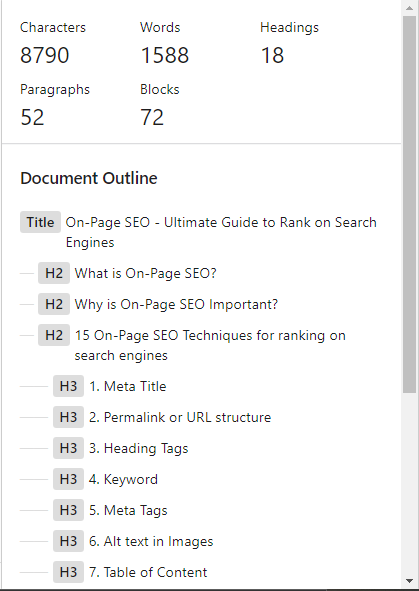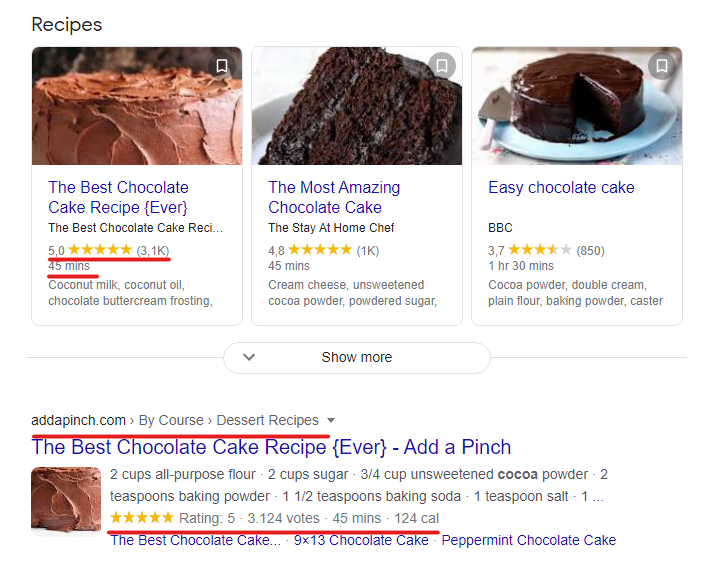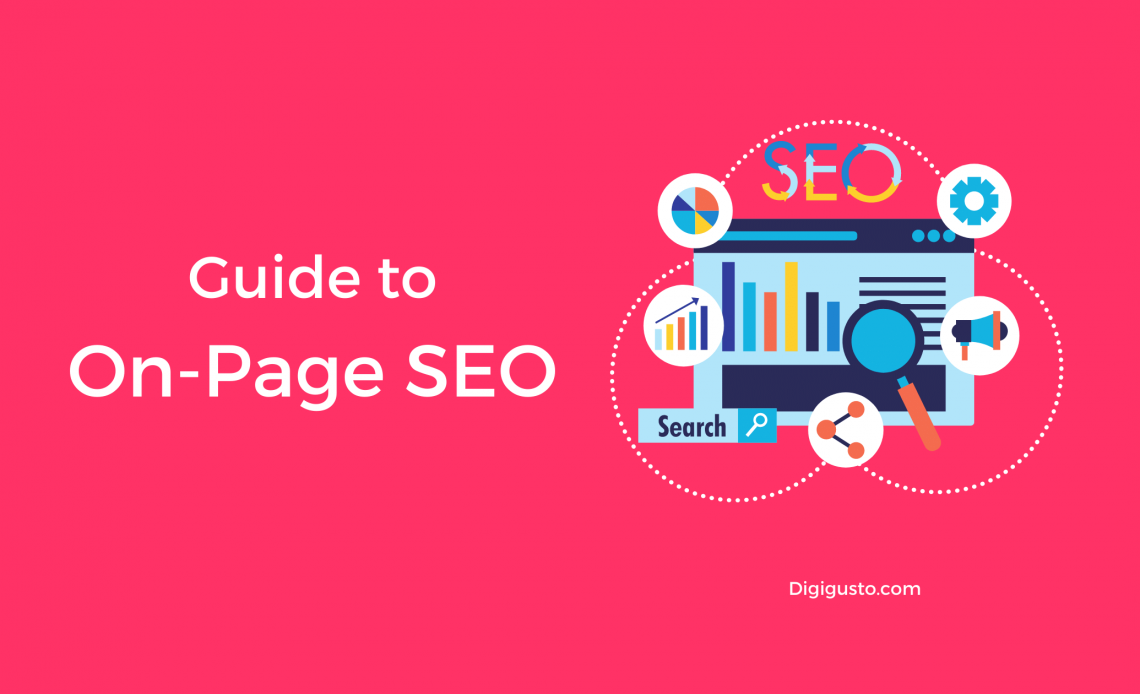What is On-Page SEO?
On-Page SEO is the process of optimizing the posts and pages on your website to improve user experience and rank your website on search engines such as Google and Bing.
There are two types of optimization when optimizing a website, they are on-page optimization and Off-Page optimization.
Off-Page Optimization is optimizations done outside of the website, for example creating backlinks and building social media channels.
In this post, we will mainly focus on on-page optimization.
Why is On-Page SEO Important?
How often, have you heard of SEO-optimized articles? Probably many times, in recent times with the boom of content and digital marketing.
As businesses operate online, the importance of search engine optimization(SEO) has only increased.
If you aren’t paying any attention to your SEO, there are higher chances of your website not getting ranked on search engines. That means you are missing out on major free traffic you can get over the period of time.
There is a process of techniques used for SEO while we write a post and after the post as well that needs to be followed for better ranking on search engines.
It is important to write your content naturally as possible and should not look forced that you are writing for search engines. More than search engines you are writing for your users. If your users are not staying on your website, the search engines will anyways put you on the last rank.
Content is King, but engagement is Queen.
15 On-Page SEO Techniques for ranking on search engines
1. Meta Title
One of the major factors to rank on search engines is the Meta Title. We all have heard of clickbait titles. Why do people have clickbait on their headlines? Its to attract the audience. The same is true for meta titles, a good meta title will make users click on the search result. The more clicks you get the higher you rank on search engines.
The title tags should always be on Heading 1 (H1) and always try to put your targeted or focused keyword at the beginning of the title. If that is not possible for your post at least mention it somewhere in your title, middle, or end.
Keep your title length under 65 characters for easy reading in search engines for users.
2. Permalink or URL structure
A good permalink structure should have your keywords on the URL. Do not use any symbols and commas on the URL. Using hyphens or dashes helps to differentiate the terms, so it is a good idea to have them.
An example of a good permalink.
- https://www.yourwebsite.com/sample-post
3. Heading Tags
Heading tags helps you highlight your post’s important points. There are 6 heading tags, H1- H6 depending on the importance of the points they are used in the order.
For example. H1 is the title tag, H2 is your subheading, H3 is for another subheading, and so on. It is an important aspect to differentiate the content while doing on-page SEO.
4. Keyword
When it comes to SEO Keyword is frequently been talked about. Having your keywords on your title, posts, meta tags is important. It is an important factor of On-Page SEO. However, this does not mean that you can spam your post with keywords everywhere. The posts should look natural and the user needs to understand them. Do not forcefully put your keywords anywhere. Use it at the beginning of a paragraph or the end paragraph and anywhere where the keyword makes sense.
Make use of keyword tools such as Semrush, Ubersuggest, ahrefs, and so on for keyword research,
5. Meta Tags
Meta tags are for search engines to recognize your blog posts and help users to show the relevant results. Your targeted keyword should be added to your meta description. Earlier, meta keywords played a big role, but today due to spamming and Google updates, they no longer serve a purpose. This does not mean you cannot have your keyword elsewhere in your posts.
Write user-friendly descriptions that are natural and related to your blog post, so that search engines pick up your keywords and show the results.
A description of under 160 characters is a good count of the meta descriptions.
6. Alt text in Images
While texts are for Google or other search engines, images also have their own importance on Google Images.
The keywords in the title and alt texts are important factors to rank your images and blogs. Give a good name to the images and not images.jpg and so on. It should have a meaning and should be related to your article.
Images are an important part of any article, however, they are also bulky. Always compress your images or use CDN and caching plugin for better speed of the website.
7. Table of Content
The table of content gives a summary of your post at the beginning of the article. If it is a long post, a table of content helps users to read a specific part, so they don’t have to go through the whole blog.
Table of content helps users navigate to your article in a better way.
How often have you seen the search on Google about a query and given you numbered points or paragraphs as results? The table of contents helps you get those jump links of the search engine.

8. Word Count of an article
Any blogs having fewer words do not serve a great purpose. They are seen as less informative on search engines.
In some recent news articles, a short post might work but in the longer run, it no longer serves its purpose.
A post with 1000+ words is seen to be more informative and is a standard word count. While there is no rule of a word limit, it is seen that longer posts tend to rank on search engines.
While word count is important, do not provide unnecessary information for the sake of an article. If the article is meant to be small, it is better to stop than to make an unnecessary lengthy post.
Write a post that is valuable and readable by the readers.
9. Schema
There are various types of posts, and they are different from each other. Structured schema markup helps the search engine identify the type of content you post. Schema can be used for both business and a blog website.
I have talked more about schema markup in this article.

10. Internal Linking
For any business, it is of utmost importance that the user spends time on their website. Interlinking the blog posts will help the readers spend more time on reading your blog posts, which helps in reducing the bounce rates and helps in page ranks.
Always use an anchor text, that matches the link you will provide on a blog post.
This helps in passing the link juice from one blog to another, hence making it more relevant and providing more value.
11. External Linking
As important as internal linking is, external linking is also a good idea to send users to external websites. External linking should only be given to credible websites. But make sure to give those links a no-follow tag so you do not give out link juices to not so credible sources.
A dofollow tag makes sense with trusted websites and no follow tag for less trustworthy websites or sources.
12. Engaging Content
I have already mentioned, content is king and engagement is queen.
Both are important.
Your posts should always be engaging and your tone should be friendly as well. Write in a manner everyone can understand well. Simple use of language can help you get a more engaging user than a difficult to read tone or the use of the language.
When a user stays for a longer period, they are likely to engage more and stay on the website for a longer period of time.
Engaging content is the key to reducing the bounce rate of a website. Lesser the bounce rate, the higher the chance of getting good rankings.
13. User experience
As a business or a blogger, it is important to have a responsive website. Today, it is more important to have your website responsive for smartphones. Redirect your links to 301 where necessary as 404 errors may turn off the users and are forced to leave your site.
Do not use ads everywhere, that decreases the interest of users on your website.
A good feel website is important to keep the users from coming back.
14. Page Speed
Remember the times when you had to wait for minutes to load a website and forever to load a video? We used to hate it as a user and were left frustrated in the end.
Today, the speed of the internet has risen and the attention capacity of the user has gone down.
You have to capture the user’s attention in seconds. That is why your website has to load in less than a second. When your website is heavy, it may not always be possible but make sure the website is as fast as it can. So, that the visitors are not running away from the site before even reading any content.
15. Bounce Rate
All the above-mentioned factors play an important role in bounce rates.
Bounce rates mean to determine how long a visitor is on your website.
For example, when you go to buy a specific thing at Walmart, you end up buying three other items you never thought of buying.
The same is the case with visitors to a website. The more engaging and good experience the users have the longer they stay and build the authority of your website. Thus, it helps you give more credibility and ranks you higher.

